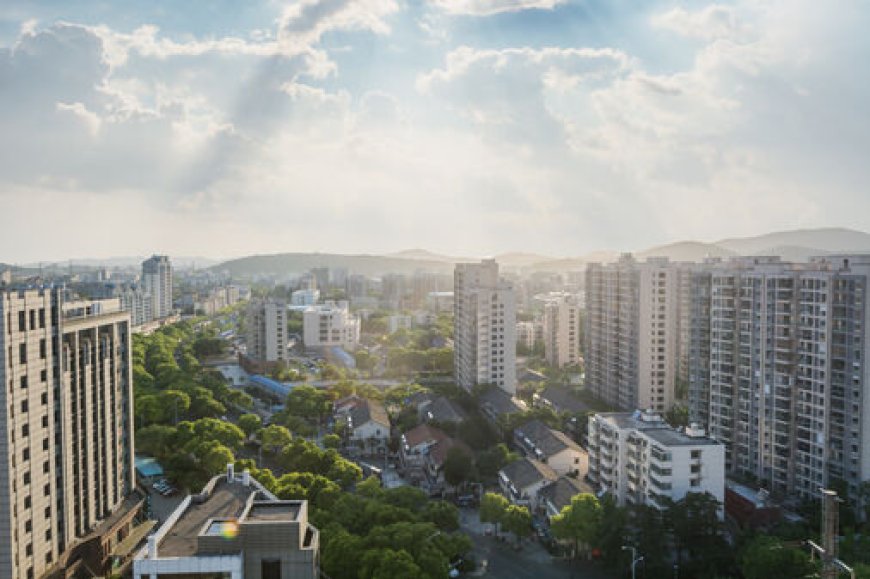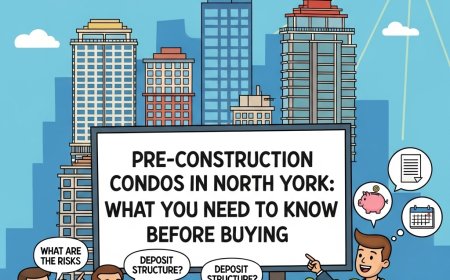Factors That Influence Real Estate Property Prices in Urban Areas
Discover the key factors that influence real estate property prices in urban areas, from location and infrastructure to market demand and government policies.

Urban real estate markets are constantly evolving, driven by a wide range of social, economic, and environmental forces. For buyers, sellers, investors, and developers, understanding the factors that influence property prices in urban areas is essential for making informed decisions.
This article explores the primary elements that impact urban real estate values and why these factors matter in shaping property trends.
1. Location and Accessibility
Perhaps the most well-known factor, location is the cornerstone of property value in any real estate market. In urban areas, proximity to key amenitiessuch as public transport, schools, shopping centers, and employment hubscan significantly drive up prices.
Properties in well-connected neighborhoods with easy access to major roads, subways, and bus routes are more desirable, especially in fast-paced cities. Areas that offer walkability and reduced commute times often attract higher demand, which naturally increases prices.
2. Infrastructure Development
Urban development projects such as highways, airports, metro lines, flyovers, and smart city initiatives play a major role in boosting property values. Improved infrastructure makes a locality more livable and accessible, encouraging both residential and commercial development.
For example, the announcement or completion of a new metro line in a city area often leads to a surge in nearby property prices. Investors often target such areas ahead of completion to gain from future appreciation.
3. Supply and Demand Dynamics
Like any other commodity, real estate is influenced by the laws of supply and demand. In densely populated urban zones, the demand for housing tends to exceed the supply, which leads to higher property prices.
New property developments are limited in central urban areas due to space constraints, zoning laws, or environmental regulations. As a result, properties in these areas tend to be more expensive, especially during times of strong demand.
4. Local Economic Conditions
The economic health of a city plays a vital role in determining its property values. Cities with strong job markets, low unemployment rates, and diverse industries tend to have higher demand for housing. This is because more people move to such cities for employment opportunities, increasing the need for both rental and owned housing.
On the flip side, economic downturns can lead to job losses, reduced migration, and a slowdown in demand, causing prices to stagnate or decline.
5. Government Policies and Regulations
Policies related to real estate taxes, property registration fees, housing loans, and development regulations also impact urban property prices. Government incentives such as reduced stamp duty, lower interest rates, or housing subsidies can stimulate demand and increase prices.
Conversely, policies that restrict development or impose heavy taxes on property transactions may reduce investor enthusiasm and dampen price growth.
6. Social and Cultural Trends
Shifts in lifestyle preferences and cultural habits influence which urban areas gain popularity. For instance, younger generations often prefer compact, tech-enabled apartments near business districts and entertainment centers.
Neighborhoods with strong social infrastructurelike parks, gyms, cafes, art venues, and co-working spacestend to command premium prices. The perception of safety, cleanliness, and community engagement also contributes to a localitys appeal and market value.
7. Interest Rates and Financing Options
Interest rates directly affect a buyer's ability to borrow and invest in real estate. When lending rates are low, housing loans become more affordable, increasing the number of potential buyers in the market. This heightened demand typically pushes property prices upward.
On the contrary, when interest rates rise, borrowing becomes expensive. This reduces affordability, thereby lowering demand and slowing down price growth in urban areas.
8. Availability of Social Amenities
Urban areas that are well-served by hospitals, schools, shopping malls, and entertainment zones are often priced higher than those without such services. The convenience and quality of life offered by these amenities make them a major attraction for families and working professionals.
Buyers often prioritize these factors, especially when choosing long-term investments or family residences.
9. Urban Planning and Zoning Laws
Zoning regulations determine what type of buildings can be constructed in specific areasresidential, commercial, industrial, or mixed-use. These rules shape how a city grows and influence the supply of available real estate.
For example, if an area is re-zoned to allow high-rise buildings or commercial development, property values in that area can spike rapidly. Conversely, areas with strict height or density restrictions may see slower growth in property prices.
10. Environmental Quality and Sustainability
Environmental factors are gaining importance in urban real estate. Areas that are free from pollution, flood risks, and noise tend to have higher property values. Additionally, buildings with green certifications, energy-efficient designs, or sustainable construction practices are now preferred by environmentally conscious buyers.
The availability of green spaces, trees, and clean water sources adds to the livability factor of urban neighborhoods and can positively affect pricing.
Conclusion
Urban real estate is shaped by a complex mix of physical, social, economic, and regulatory factors. While location remains king, it is the combination of infrastructure, economic conditions, policy decisions, and buyer preferences that ultimately dictate how property prices evolve.
Whether you're planning to buy, sell, or invest, understanding these dynamics will help you navigate the urban housing market more effectively. By keeping a close watch on these influential factors, you can make better decisions that align with your real estate goals.
Important Links
How En Bloc Sales Work in Singapore: A Guide for Condo Owners and Buyers
A Complete Guide to Real Estate in Singapore for Home Buyers and Investors
Understanding the Real Estate Market in Singapore
How to Start a Career in Real Estate with No Experience
Guide to Executive Condominiums (ECs) in Singapore: Are They Worth It in 2025
Thomson View En Bloc Condo Showflat










































